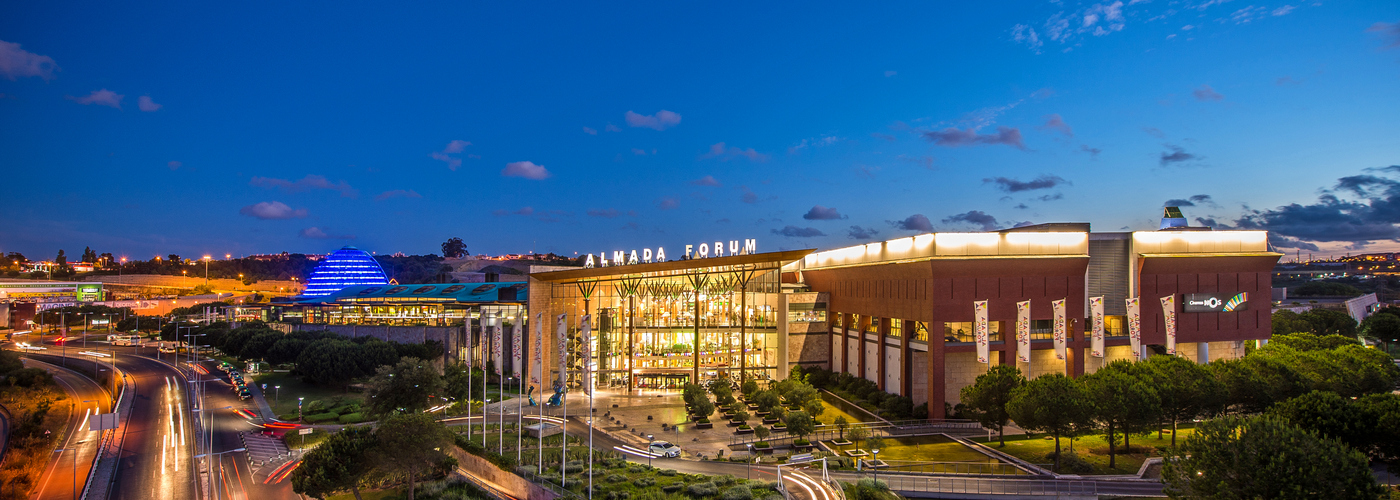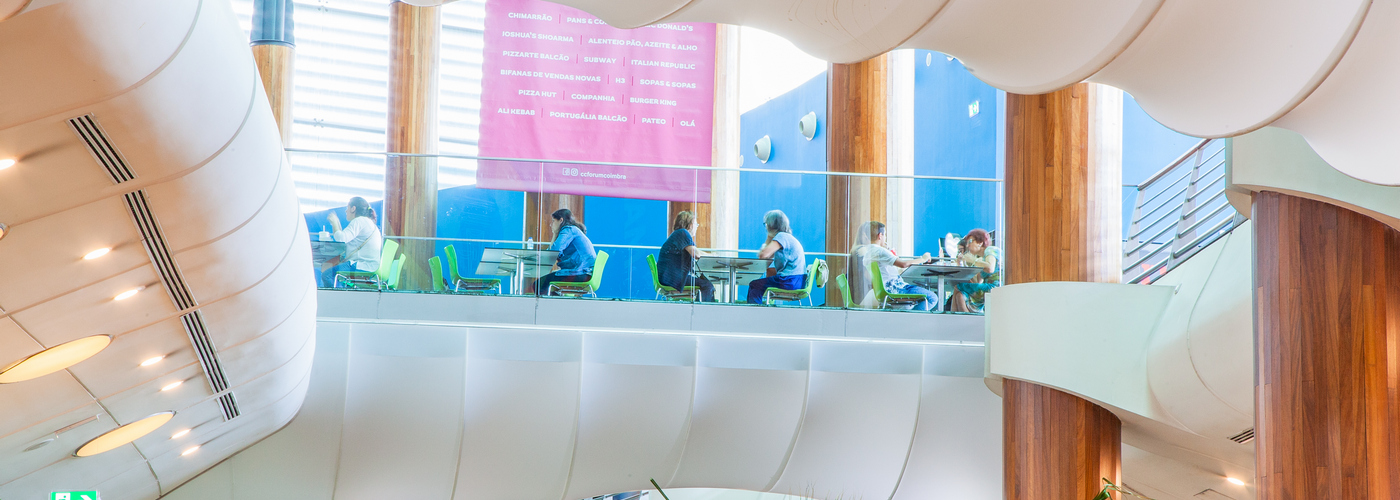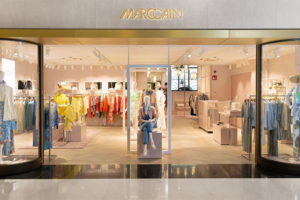ACROSS: On September 15, 2008, US investment bank Lehman Brothers went bankrupt. It marked the beginning of the biggest global financial and economic crisis since the 1930s. Spain and Portugal were severely affected. What impact did this crisis have on the Spanish and Portuguese Retail Real Estate sectors?
FRANCISCO CAVALEIRO DE FERREIRA: On the one hand, the economy lacked stability. There was uncertainty in both markets regarding the risks they presented due to rising government debt and high bond yields, and the lack of financing in place at the time led to disinvestment in the real estate sector.
On the other hand, the strong reduction in disposable income, caused by record-high unemployment, increased taxes and wage freezing (public sector), reduced retailers’ confidence and limited their expansion and investment in both countries.
ACROSS: What was the consequence?
CAVALEIRO DE FERREIRA: The decrease in sales and footfall led to retail concentration – some independent local retailers went bankrupt, and there were no new entrants – which impacted occupancy and commercial conditions.
This, in turn, led to pressure to lower rents, increased debt levels for struggling retailers, and increased vacancy. Lower center and store investment capacity, with respect to both owners and retailers, deteriorated the customer experience – less novelty, aging spaces. There was a bigger opportunity for online retail. (Re)development sharply declined, causing most companies in the sector to disinvest.
Essentially, there were no new openings of shopping centers in Portugal or Spain until 2016. Over the last two years, we’ve seen a strong recovery, particularly in Spain, where the installed capacity and GLA per inhabitant is lower.
ACROSS: From your perspective, why were Spain and Portugal’s economies so affected by this crisis?
CAVALEIRO DE FERREIRA: Both countries had structural problems when the crisis hit, and those problems contributed to the slow recovery. As a small economy in a globalized world based on consumer spending, with high levels of family indebtedness, extreme dependence on imports, and low productivity levels, as was the case at the time, Portugal was not in a position to react and had no argument to fight the fall of confidence in the financial system. Portugal was highly dependent on Europe’s economic health, so the global recession and lack of competitiveness relative to the rest of the Eurozone strongly impacted the country.
At that time, there was also elevated concern regarding the country’s largest private bank, the condition of its balance, and central bank supervision, so external funding in the secondary market was reduced tremendously, generating a huge wave of cost cutting and disinvestment in spending in the country, which affected the “real economy”. In a short period of time, Portugal was forced to enter into a bailout process.

ACROSS: And Spain?
CAVALEIRO DE FERREIRA: The scenario was different there, given its capacity as a big economy, with high export and productivity levels. At the same time, Spain’s central bank put a plan in place to fund the banking system with 500 billion euros, which allowed the country to guarantee good levels of liquidity and maintain high levels of confidence with the economic agents.
Nevertheless, the internal imbalances that had accumulated during the pre-crisis period aggravated the situation. In the real estate sector, a spiral of growth in demand, prices, and supply fueled a major bubble, which burst when the impact of the international crisis was felt in Spain. The impact of the crisis on employment in the Spanish economy was devastating.
ACROSS: How hard was Multi Iberia impacted by the crisis?
CAVALEIRO DE FERREIRA: The impact was significant. At that time, Multi in Iberia was mainly focusing on the development and promotion of shopping centers as well as the management of those centers for third parties.
In both countries, we saw the interest of investors vanishing and the scarcity of capital to finance projects that were in the pipeline. Due to a significant level of plot partnership commitment, our activity significantly decreased on the development side. In both countries, we made the decision to stop more than six projects, all of relevant dimensions, but we simultaneously moved forward with a couple of projects, retaining ownership as well as all the associated risks.
The crisis forced us to quickly adapt and adjust our scope of activities as well as our strategy with respect to the new market reality. In 2013, the crisis introduced a new shareholder with a new strategy and an impressive capacity to allocate capital to our activities.
ACROSS: How did things progress for Multi in Iberia?
CAVALEIRO DE FERREIRA: During the adjustment process, we were able to maintain our promotion and development competencies, despite the reduction in these activities, significantly improve our capacity and asset management skills, with impressive results in the values of the assets we managed, and consolidate our position in the third-party management business.
It was quite rewarding to maintain the trust and support of all of the owners for whom Multi provided third-party management throughout the entire crisis period and to be able to launch Forum Sintra in 2009 and Metropolis South Building in 2010, both of which proved successful, despite the competitive area and difficult market situation. It clearly showed the experience, creativity, and commitment of our teams as well as our ability to establish long-term, trustful relationships with key tenants.

ACROSS: What is the current situation in Spain and Portugal?
CAVALEIRO DE FERREIRA: Like every crisis, this one served as somewhat of a filter and distinguished the most prepared and qualified assets from the others. Basic requirements, such as localization, accessibility, and catchment area were part of the first layer for nonperforming assets.
Convenience, mix, experience, and services were part of the second layer. If you had done a good job in the development area, the first layer could be overcome, and if you had done a good job in the management area, the second layer could be overcome as well. Additionally, those that could present high standards of experience and services, together with innovation, the use of new technologies, a digital strategy, and customer focus, clearly represented the winners of the crisis.
Secondary shopping centers were seen as risky investments, and there was a focus on the prime ones. A set of opportunities to buy and sell assets were opened, and changes regarding the structure of guaranties, either on the sell/acquisition side or on the operational side, were implemented with respect to relationships with retailers. Leasing contracts were also updated with regard to duration and breaks. Now, they are more dynamic and flexible than ever.
The outlook of both economies, with GDP growth, deficit reduction, an increase in foreign investment, and unemployment reduction, has greatly boosted the confidence of investors, retailers, and consumers. Both countries are regarded as great long-term investment opportunities.
ACROSS: Despite everything, Multi in Iberia has been quite active over the last decade. Please give us a few company highlights.
CAVALEIRO DE FERREIRA: As I mentioned before, it has been a challenging period. There were major projects in our pipeline, such as Forum Alverca, Forum Setubal, Forum Leiria, and Forum Cascais in Portugal as well as Espacio Canãveral, Espacio Paterna, and Espacio Rio in Spain, that never saw the light of the day as a result of the crisis. Those projects were between 30,000 sq m of GLA and 90,000 sq m of GLA.
Smaller projects were cancelled as well. Nevertheless, we were able to move forward with Forum Sintra, a 46,000-square-meter shopping center in the greater Lisbon area, which opened in 2011 and the 14,500-square-meter Metropolis south building, which opened in 2012 and is the first office building to be constructed in Lisbon as part of a greater urban plan for this area.
In 2013, the company changed ownership and 14 new assets were acquired for us to manage, improve, and sell at a later date. Some excellent assets from this new portfolio could easily be highlighted, but Almada Forum, due to its extraordinary performance, serves as the best example. Short-term acquisitions, such as one portfolio that included approximately 40 assets, were good opportunities for us to gain experience and test the flexibility of our management structure.
In the meantime, we have managed to maintain our core activity as a manager for third parties. We have not only maintained our long-term partnerships with Commerz Real and REEF (Dutch Bank), but we have started to work with Blackstone, Green Bay, and Merlin Properties. At the beginning of 2018, we managed more than half a million sq m of GLA, had approximately 1,500 contracts, represented more than €1 million in sales, and boasted around 100 million visitors.
ACROSS: We know that Portugal has a big and well-established “mall culture” compared to other markets. Nevertheless, the digitization of consumers’ shopping habits is a real threat for the retail market. How has Portugal reacted to this trend?
CAVALEIRO DE FERREIRA: The digitization of consumer shopping habits is a global trend and Portugal and Spain have also been impacted. Online commerce is still relatively low in Portugal, and even in Spain, compared to other European markets, particularly with regard to apparel, which demonstrates the importance of in-store purchasing in these markets.
Even though these countries are in the early growth stages, the availability of the internet as a shopping channel won’t reverse this trend. This is a reality that we have already considered with respect to our plans and operations.
That is why we invest in getting to know our consumers: Through continuous research and close cooperation with core trendsetting retailers, we ensure that our spaces remain attractive, with the right content (brands) and experience (services and events).

ACROSS: Tell us a little bit about your next or upcoming activities.
CAVALEIRO DE FERREIRA: The strategic positioning of Multi in Iberia is on third-party management mandates. As service providers, we want to be the best in class for our investors and partners.
Despite our strong presence in Iberia, within the context of this vision, we will place strong focus on Spain, where our presence has space to grow, while, in Portugal, we will consolidate our position as one of the leading players of more than 20 years. We will also strive for the promotion and development of existing plots in Lisbon.
With a wealth of experience in the shopping center, retail park, and offices sector, we will provide continuity to the six ongoing redevelopment projects while exploring all opportunities to further advance the values of the assets that we manage.
ACROSS: Please describe the main trends in the Spanish and Portuguese retail real estate sectors.
CAVALEIRO DE FERREIRA: In both countries, shopping centers are undergoing extensive renovation to make them more experiential and appealing for new generations of consumers, who show significantly different shopping patterns: More, and increasingly sophisticated, Food & Beverage and entertainment options are being integrated, and the overall atmosphere is being upgraded with design and technology, thereby significantly improving one’s experience.
Adding entertainment value to the shopping center experience is key to reinforcing its competitiveness with the online world, as both children and adults look for unique and differentiating experiences.
The Food & Beverage and leisure sectors are leading the way in terms of innovation, with pop-up stores, multi-purpose spaces, and the incorporation of smartphones into the shopping process. The rise of e-commerce has increased competition among shopping centers, which must become omnichannel spaces.
ACROSS: Let’s take a look into the crystal ball: How will these markets change over the next decade?
CAVALEIRO DE FERREIRA: Online sales will continue to grow, and one particularly relevant area to follow will be the growth of online food retail, given the strength of hyper/super as traffic builders for shopping centers and the space those retailers tend to occupy. We anticipate that shopping centers will have to reinforce leisure and services in order to maintain attractiveness.
A higher percentage of GLA will be temporary and will demand very dynamic management. A higher percentage of GLA will be rented as warehousing for retailers to fulfill online orders more efficiently. Most shopping centers will rent space at a “delivery center” to shopper aggregators – Uber, Glovo, Subscription Boxes Brands, etc. Stores will be highly experiential and visits will be a lot more Disneyland-esque.
We will face increased competition: Street commerce may become more like shopping centers, i.e., tools and systems to easily move people from store to store may be implemented, (big) office buildings will incorporate more retail and services, etc. Innovation has become an integral part of the way shopping centers evolve: 3D printing technology, augmented reality to break down the barriers between the digital world and the physical world, apps for paying by phone, touchscreens, etc.
The most stunning shopping centers will not be based solely on their tenant-mix, but also on memorable and emotional experiences that entice hyperconnected consumers who require more impulsive elements to attract them to retail spaces.
Sign up for our ACROSS Newsletter. Subscribe to ACROSS Magazine.







![Titel_Across_1_24_Endversion[111270] Titel_Across_1_24_Endversion[111270]](https://www.across-magazine.com/wp-content/uploads/elementor/thumbs/Titel_Across_1_24_Endversion111270-qjpg2yp7x6msxzo90wpo62uop32tmjtjils84ezryg.jpg)
